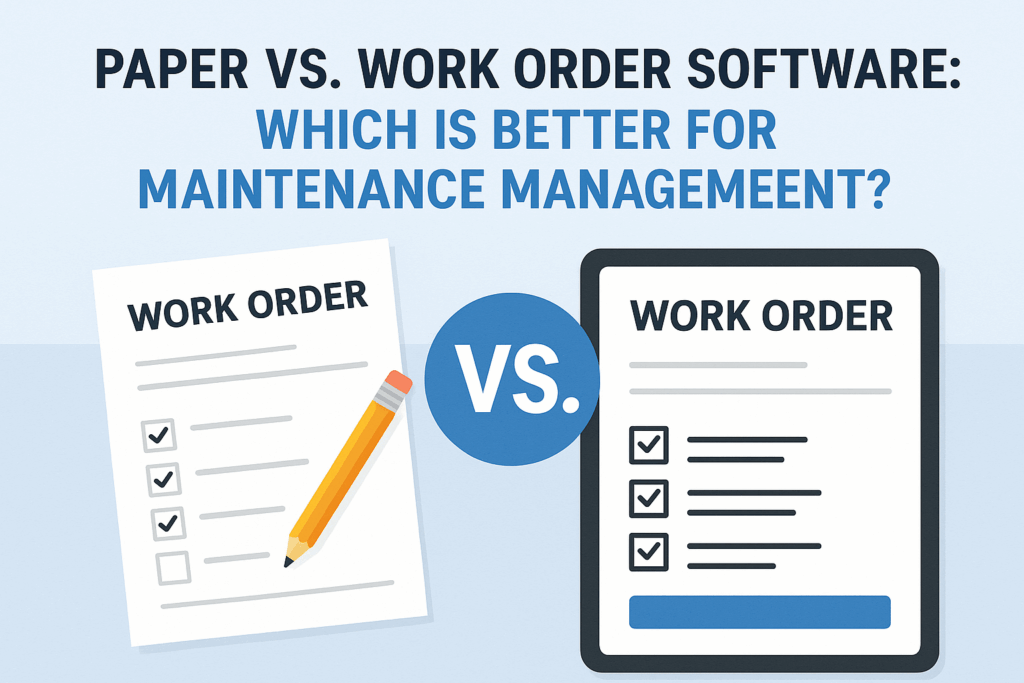
In today’s fast-paced property and facilities management environment, efficiency and organization are essential. One of the most important tools in maintenance operations is the work order the document that tracks service requests, repairs, and ongoing maintenance. While some organizations still rely on traditional paper-based work orders, many are switching to digital work order software. So which method is better? Let’s break it down.
1. Accessibility and Efficiency
Paper Based Work Orders:
Often require physical handoffs between staff
Easy to lose, misfile, or damage
Can cause delays due to location-based access
Work Order Software:
Accessible from anywhere using a smartphone, tablet, or computer
Staff can receive and update work orders in real time
Greatly reduces administrative time and communication delays
Winner: Work Order Software
2. Organization and Record Keeping
Paper Based Work Orders:
Require manual filing and storage
Difficult to search for past records
Risk of incomplete or illegible information
Work Order Software:
Automatically stores data in the cloud
Easily searchable by date, location, or keyword
Ensures standardized, complete documentation
Winner: Work Order Software
3. Communication and Collaboration
Paper Based Work Orders:
Often lack real time updates
Relies heavily on phone calls or physical presence
Can lead to missed or duplicated tasks
Work Order Software:
Provides real time status updates and notifications
Allows staff and tenants to communicate within the system
Reduces miscommunication and improves accountability
Winner: Work Order Software
4. Cost and Implementation
Paper Based Work Orders:
Low upfront cost
No training or software required
Long term costs in labor, printing, and storage
Work Order Software:
Requires subscription or licensing fee
Some initial training needed
Pays off in long term efficiency and labor savings
Winner: Depends on the size and needs of the organization. Small teams may prefer paper at first, but digital systems are more scalable.
5. Data and Reporting
Paper Based Work Orders:
Manual tracking of work trends and performance
Time consuming data analysis
Prone to human error
Work Order Software:
Automatically generates reports and analytics
Helps identify recurring issues, costs, and inefficiencies
Supports preventive maintenance planning
Winner: Work Order Software
Conclusion: The Clear Advantage of Going Digital
While paper based work orders might still work for small teams or temporary situations, work order software offers clear advantages in terms of speed, organization, communication, and long term cost savings. For property managers, maintenance supervisors, and facility teams aiming for greater productivity and transparency, switching to digital work orders is a smart investment.
